29 Evidence-Based Benefits of Tomatoes
Tomatoes are one of the most common vegetables we use around the house.
You might be using them for a variety of dishes, including sandwiches, salads, juice, or pasta.
Tomatoes are inexpensive, versatile, and easy to find, but that’s not all — they are also excellent for your health.
They provide a range of health benefits with their rich nutrition content and ensure you are fit both physically and mentally.
Sounds good?
Read ahead to learn more about these wonderful benefits as well as other relevant information about this juicy red vegetable.
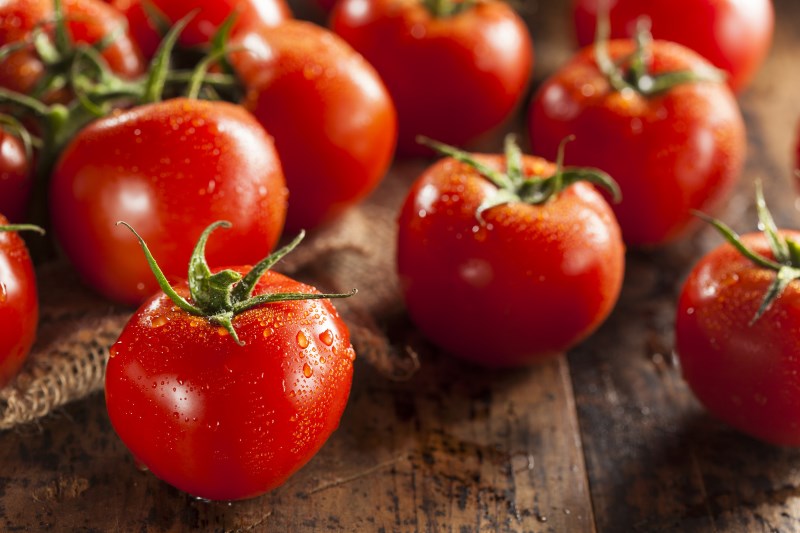
History
Historical evidence suggests that tomatoes originated in South and Central America.
In fact, wild tomatoes still grow in the Andes.
The Aztec civilization might have been the first to start cultivating tomatoes back in the seventh century BC.
It was quite a popular vegetable, and some historians claim it was even considered an aphrodisiac.
After Spanish colonists took over the Aztec Empire in the early sixteenth century, they began exporting tomatoes to Europe.
In some countries, such as Britain, tomatoes were wrongly considered to be poisonous — perhaps because they resemble the toxic plant known as nightshade or because the acid content in tomatoes caused people who ate off pewter plates to get lead poisoning.
In these places, tomatoes were mainly used for decorative purposes (1).
Nonetheless, other European countries began appreciating tomatoes for their culinary application, and when Europeans migrated to the New World, cultures and tastes intermingled.
Although many people remained wary of tomatoes for some time, this vegetable gained in popularity.
During the American Civil War, tomatoes were a favorite for canneries, which supplied canned foods to the troops, because they grew quickly and were easily preserved.
In the 1880s, the first pizza was created in Naples.
Pizza Margherita, named after the Italian monarch of the time, became an instant hit.
Tomatoes, which were indispensable for making pizzas, became more widely used.
In 1870, the first hybrid tomato was developed and became a commercial crop.
Some varieties of seeds used by Livingston, the developer, are still used today as seeds for heirloom tomatoes.
In 1897, Campbell’s famous condensed tomato soup started being manufactured, making tomatoes even more favorable in the public eye.
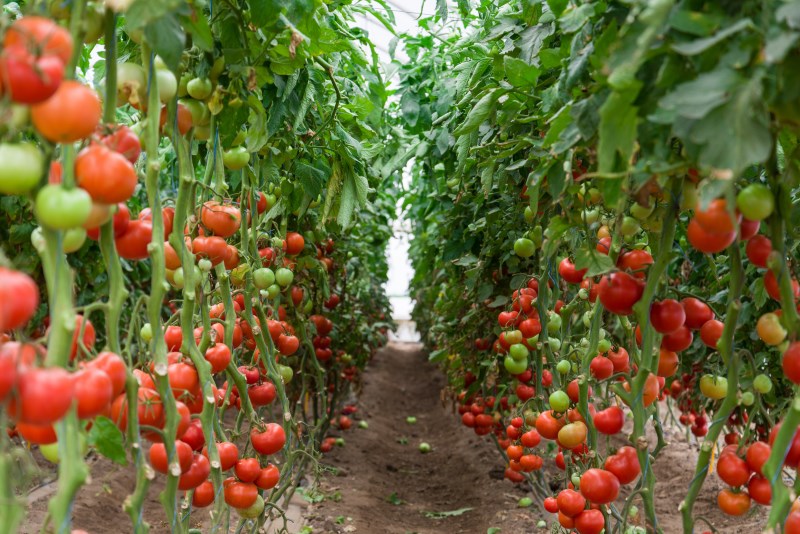
How Tomatoes Grow
Tomatoes are fairly easy to grow, and if cared for properly can yield exceptionally productive harvests.
One thing tomato plants yearn for is warmth and sunlight, so except in hardiness zones where the winters aren’t cold, seeds are planted in late spring or early summer.
Sometimes, some tomato plants won’t bear fruit when the temperature is too hot or will get fungal diseases, such as blight.
In areas where it is too hot or too humid, tomatoes are planted when it cools down a little, and diseased leaves are plucked out in time.
Tomatoes aren’t grown in shady areas; without at least six hours of direct sunlight, tomatoes lack distinct flavor.
Tomato plants tend to spread out, so to make better use of space, most growers add tomato stakes and cages to keep the plant off the ground and make sure it grows upright.
Plants are grown about three feet from each other or in different containers.
Because tomatoes need constant nutrition from the soil, many growers add a continuous-release fertilizer.
Around four inches of compost is added to the planting holes, and the seeds can finally be planted or a small plant is transplanted.
The plants need to be watered consistently and generously throughout the growing period.
They are given a steady supply of water, and the soil is mulched after several weeks to retain moisture and minimize weeds.
Fertilizer is also regularly added to the soil.
Pesticides or other forms of pest control are often used to keep away hornworms, whiteflies, and the like (4, 5).
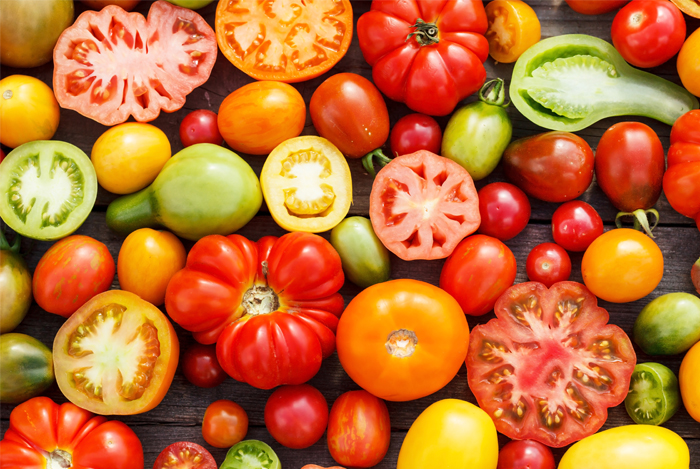
Varieties
Farmers across the world today cultivate more than a thousand types of tomatoes!
These come in a variety of colors, e.g., red, yellow, green, purple, orange, and a range of sizes, from tiny to quite large.
They even taste different, with some juicier and some tougher than others.
If you plan to grow your own tomatoes, you might want to consider some important factors when choosing varieties.
For example, do you want to grow tomatoes that look like Rudolph’s nose, or do you want to try the less common kinds?
What kind of flavor are you looking for?
If you’re using tomatoes in a number of ways, maybe you should plant different plants based on which variety does the best job for each.
Think about whether you want hybrid tomatoes, which are produced by cross-pollination between two types of tomato plants, or heirloom tomatoes, which are produced by open pollination through many, many years with plants having desirable characteristics.
If you’re growing both, make sure the heirloom tomatoes are kept well away from the hybrids, since you don’t want cross-pollination to occur.
Another factor to consider is how much space you have.
Some varieties are more suited to pots than others (you can even get dwarf varieties if you want!).
If you have less space, you should choose the determinate varieties that have short bush-like plants that produce tomatoes all at once and die soon after.
They’re easier to care for, don’t need support, and take less time to grow.
Indeterminate varieties are vine plants and need cages and stakes for support.
They keep growing and producing fruit until it’s too cold for them to survive and thus take more time for care.
You might also want to think about the climate you live in since different varieties are better suited to different climate zones.
If you live in an area where you have an early frost, you would want to plant early-developing varieties in the spring or summer, but if you have a mild winter, you can get late-developing varieties too.
Furthermore, you have to think about what diseases may affect plants in your area.
You can buy seeds of varieties that have been developed to be disease resistant for such conditions as verticillium and root-knot nematode.
If you consider all these different aspects of growing tomatoes, you can find varieties that are best suited to your interests (6, 7, 8).
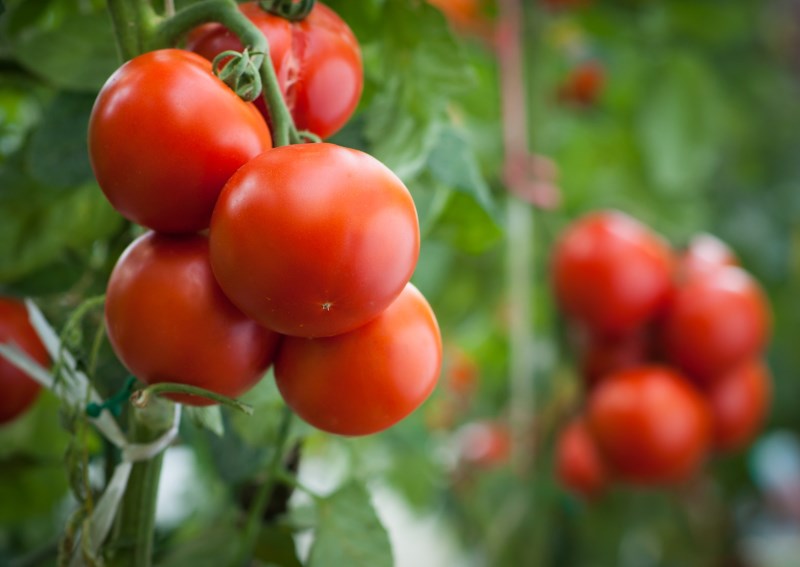
Interesting Facts
- Tomatoes are actually fruits (given that they are the developed ovaries of a seed plant) and not vegetables. Tomatoes are considered vegetables despite being botanically classified as fruits because of U.S. taxation laws. In the 1887 legal case of Nix vs. Hedden, the Supreme Court decided that tomatoes were vegetables because they were eaten with savory, not sweet dishes. The case was filed after a tax was imposed on imported vegetables but not on fruits.
- Tomato plants called Gigantamo can produce the biggest tomatoes in the world. These tomatoes can weigh up to three pounds and have a diameter of up to ten inches! The next time you have to prepare a tomato dish for a big gathering, you know what to get!
- The largest tomato ever recorded was grown in Oklahoma in 1986. It weighed more than seven pounds! It was reported that the grower used it to make sandwiches for twenty-one relatives.
- How many varieties of tomatoes actually exist is a subject of debate. According to the U.S. Department of Agriculture, there are more than 25,000 varieties, but others say there are only around 10,000. Around 75,000 are said to be in active cultivation.
- The town of Bunol in Spain hosts the world’s biggest tomato fight each year. Called “La Tomatina,” the festival attracts about 40,000 people who get together each year and enjoy throwing around a hundred metric tons of tomatoes at each other. Other festivals held across the world also celebrate the delights of tomatoes.
- From the spring of 2005 to 2006, a tomato plant at the Epcot Science Project at Walt Disney World produced a record 32,194 tomatoes! The plant, which was brought to the experimental greenhouse from Beijing, consistently produces a great amount of fruit each year. The tomatoes are used at the company’s restaurants. Visitors who take the “Living with the Land” ride can pass the greenhouse and observe the 522 kg plant.
- China produces the most tomatoes in the world, followed by the United States, India, Turkey, and Egypt. In the United States, not just commercial growers, but 93 percent of gardening households grow tomatoes! The vegetable’s popularity has only grown as the years go by; salsa may now be in higher demand than ketchup, but both are essentially different spins on tomatoes.
Nutritional Facts
Tomatoes are low in sodium, fats, and cholesterol but high in many beneficial vitamins and minerals.
Most tomatoes are usually about 95 percent water and a 5 percent mix of carbohydrates, fibers, and nutrients.
A medium-sized tomato has only around twenty-two calories, which come from its sugar content (sugar also accounts for about 70 percent of its carbohydrate content).
Let’s take a look at how much of what we can get from one hundred grams of tomato:
- Calories: 18
- Water: 95 percent
- Protein: 0.9 gram
- Carbohydrates: 3.9 grams (sugar: 2.6 grams and fibers: 1.3 grams)
- Fats: 0.2 grams (saturated: 0.03 gram, monounsaturated: 0.03 gram, polyunsaturated: 0.08 gram, and omega-6: 0.08 gram)
Here is the vitamin content of tomatoes, with a daily value percentage based on a recommended diet of 2,000 calories:
- Vitamin A: 5 percent
- Vitamin C: 15 percent
- Vitamin D: 4 percent
- Vitamin K: 7 percent
- Vitamin B1 (Thiamine): 3 percent
- Vitamin B2 (Riboflavin): 1 percent
- Vitamin B3 (Niacin): 4 percent
- Vitamin B5 (Panthothenic acid): 2 percent
- Vitamin B6 (Pyridoxine): 6 percent
- Folate: 4 percent
- Choline: 1 percent
Here is the mineral content of tomatoes:
- Calcium: 1 percent
- Iron: 3 percent
- Magnesium: 3 percent
- Potassium: 5 percent
- Phosphorus: 3 percent
- Zinc: 2 percent
- Copper: 7 percent
- Manganese: 5 percent
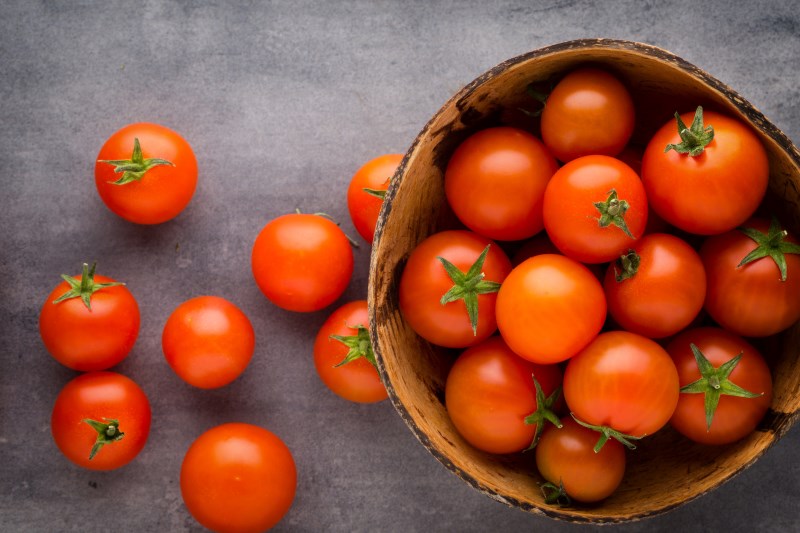
Health Benefits of Tomatoes
Tomatoes and Antioxidants
Antioxidants are substances that remove potentially damaging oxidizing agents from the body.
By protecting your cells, they essentially protect all the organs in your body.
Tomatoes are a great source of antioxidants since they have vitamin C (ascorbic acid) and antioxidant compounds lycopene and beta-carotene.
These antioxidants neutralize free radicals, which are highly reactive uncharged molecules with an unpaired valence electron.
In simpler terms, free radicals, which can be produced within the body or outside, are unstable atoms that in excessive amounts can cause photoaging, cancer, and inflammation.
Among the phytonutrients and vitamins present in tomatoes, lycopene is a rather powerful antioxidant.
Among all carotenoids, it is the most effective in neutralizing free radicals (13).
It is found abundantly in the peel of tomatoes and has a range of benefits (14).
Similarly, tomatoes have beta-carotene, which is converted into vitamin A in the body, and other antioxidants, such as naringenin and chlorogenic acid.
Studies show that the flavonoid naringenin protects against inflammation and chlorogenic acid against high blood pressure (15, 16, 17).
Vitamin C has similar effects, providing protection against inflammation and other effects of free radical damage.
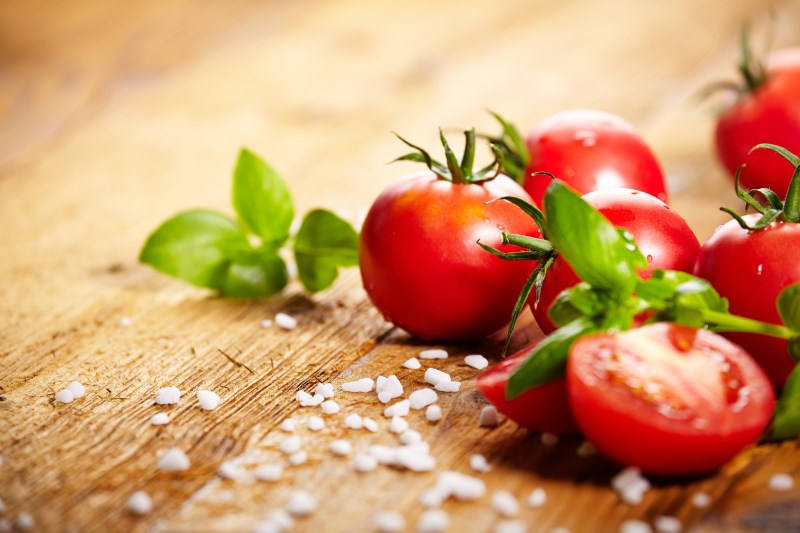
Tomatoes and Heart Health
Heart health is important to think about at all stages in life.
Your heart is responsible for delivering blood through your body, thus ensuring that each tissue and cell gets oxygen and nutrients and that all impurities are released from the body.
As it is your most important organ, you have to take steps to look after it, such as exercising and eating right.
Tomatoes are very effective in this regard since they are low in cholesterol, which prevents the buildup of plaque in the arteries.
Studies have shown that people who take in inadequate levels of lycopene and beta-carotene are at more of a risk for heart attacks (18, 19).
Not only are these effects on their own, but lycopene can also help by lowering levels of low-density lypotene cholesterol you might be building up from other foods and also by lowering lipid peroxidation (20, 21).
Likewise, beta-carotene can lower the risk of metabolic syndrome, which involves high blood pressure, high blood sugar, and high cholesterol (22).
Another factor that helps is the high level of potassium and a low level of sodium in tomatoes, which can significantly decrease the chances of developing cardiovascular and ischemic heart disease (23).
A study on various fruits and vegetables determined that tomatoes are very effective in reducing platelet clumping due to their many phytonutrients (24).
Other studies have shown the positive role of vitamin C in lowering LDL cholesterol and protecting the heart against oxidative stress, inflammation, and risks of blood clotting (25, 26, 27, 28, 29).
Tomatoes and Cancer
Cancer is quickly becoming one of the most common diseases in the world.
It occurs when cells in certain parts of the body grow or reproduce uncontrollably and become malignant, spreading and invading other tissues and cells.
The specific causes behind cancer aren’t clear, but pollutants, such as smoke and UV radiation, are known to be possible causes.
With pollutants all around you and cancer treatments only partially effective in most cases, preventive measures are important.
To keep your cells healthy, tomatoes are a great start.
Research has shown that eating tomatoes or tomato-based products is positively linked to lower chances of developing stomach, lung, prostate, rectum, colon, oral cavity, esophagus, pancreas, and cervix cancer (30, 31, 32).
Lycopene is believed to account for this protective characteristic of tomatoes, particularly for prostate cancer (33, 34, 35).
Studies also link the carotenoids in tomatoes with lower risks of developing breast cancer in women (36, 37).
A saponin phytonutrient called alpha-tomatine found in tomatoes has also been linked with the death of prostate cancer cells and inhibiting the growth of cancer cells in the lungs (38, 39).
It is clear that tomatoes can go a long way in helping you stave off cancer.
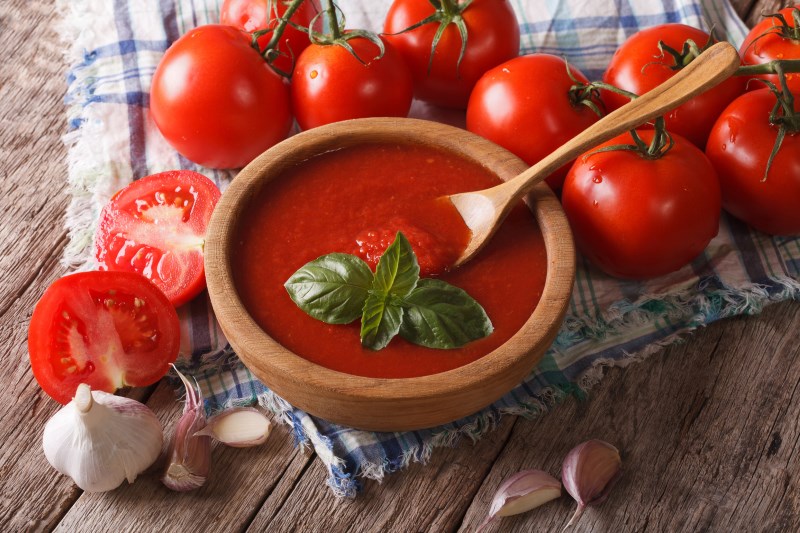
Tomatoes and Eyes
Maintaining good vision is important because it allows you to perform better in all aspects of your life.
With strong eyes, you are able to perform your daily activities more efficiently and are able to have better judgment regarding objects and spaces around you.
Poor vision can impair your quality of life and prevent you from doing your best in whatever you may do.
The strain on your eyes can cause headaches and fatigue.
While it is true that impaired vision can be corrected in most cases, wouldn’t you want to save yourself the inconvenience and the uncertainty by keeping your eyes healthy?
A wonderful way to do so is by eating tomatoes.
They contain vitamin A and beta-carotene that the body converts into vitamin A, which is important for maintaining vision since vitamin A supports the retina’s function and helps your eyes see better in the dark (40).
As you age, you’re at risk of developing macular degeneration.
Such foods as tomatoes, which are rich in lycopene, lutein, and beta-carotene, are a great way to prevent age-related MD as well as cataracts.
A study has found that lycopene and zeaxanthin, both present in tomatoes, can reduce chances of neovascular AMD by up to 35 percent (41).
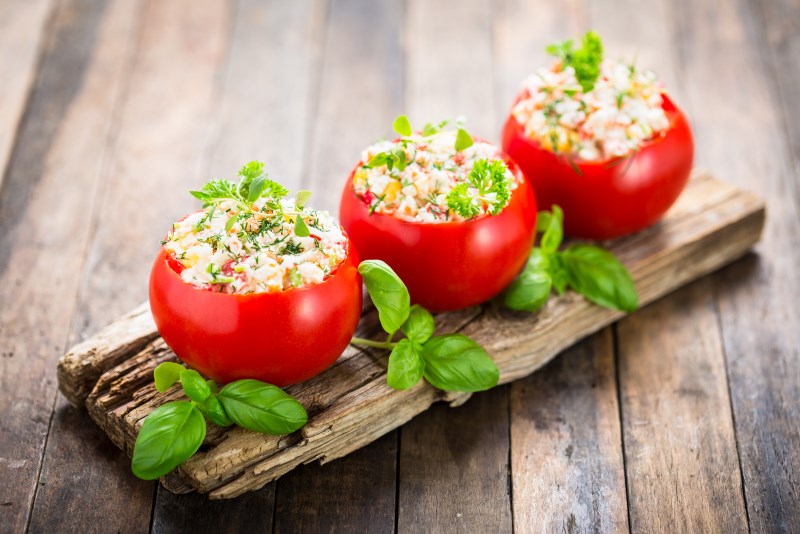
Tomatoes and Skin Health
Healthy skin helps you look younger and more attractive, boosts your confidence, and may improve your professional, personal, and social life.
Your skin also protects you from ultraviolet rays, bacteria, and viruses.
With the help of the sun, your skin produces vitamin D, which is needed for strong bones.
Your skin regulates your sensitivity to sensation, such as pressure or pain.
It even controls your body temperature, assisting in homeostasis.
Tomatoes have vitamin C and vitamin A.
Vitamin C is required for collagen synthesis, helping keep your skin firm, improving elasticity, and helping heal wounds (42).
Vitamin A helps the skin retain its youth with its anti-aging properties (43).
Sunburns, which can severely damage the skin and increase vulnerability to skin cancer, can be avoided to some extent through tomatoes because of their beta-carotene (44).
Lycopene and other such compounds in tomatoes can also effectively protect your skin from light-induced damage (45, 46).
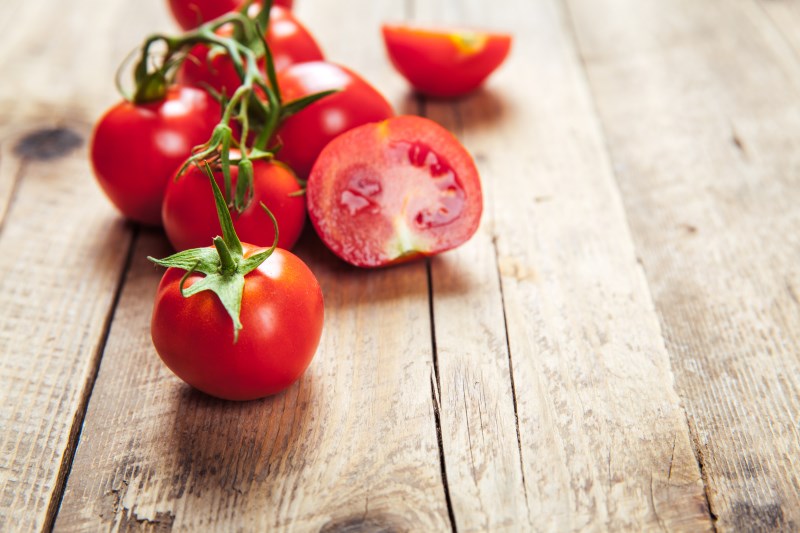
Tomatoes and Bones
Our bones help maintain our physical structure and movement.
They are important for proper posture and thus help you look and feel young and fit, but bone health is needed for more than your bones alone.
Your bones are very closely linked with your immune system; as you age, your bones become weaker as does your immune system.
Declining bone health often results in various conditions, such as fatigue, low energy, and susceptibility to diseases and viral infections.
For the elderly, and especially for women experiencing menopause, loss in bone mineral density is common, making them vulnerable to bone fractures.
Without healthy bones, you’re bound to experience pain while performing certain physical tasks, but tomatoes can help your bones stay healthy.
Again, we find that lycopene is instrumental in maintaining your health.
Lycopene protects bone health by preventing the onset of osteoporosis.
Studies have demonstrated that lycopene can reduce chances of bone fractures in the limbs (47), and a study using post-menopausal women as subjects showed that it also has the power to decrease risks of bone breakdown after menopause (48).
Therefore, tomatoes can be terrific for fighting against weakening bones, especially as you age.
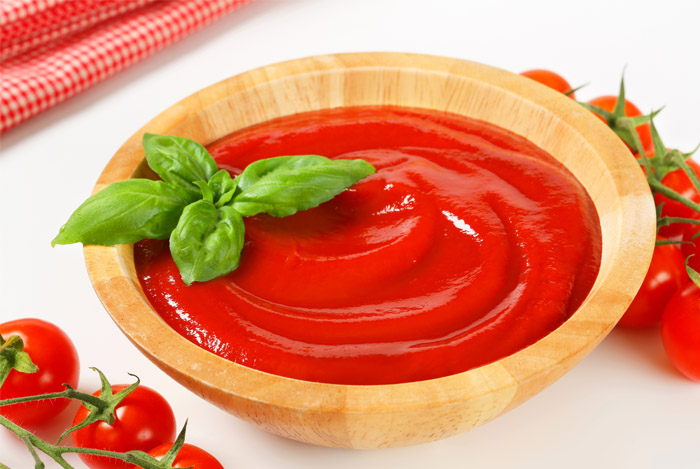
Tomatoes and Asthma
Asthma is a rather common long-term condition in which the airways around the lungs become inflamed and cause difficulty in breathing.
Those most commonly at risk are people with a family history of asthma or other atopic conditions, such as allergies, and people who have had bronchiolitis or were exposed to smoke as a young child or as a fetus.
For sufferers, asthma can be triggered by many things, including smoke, laughing or running, and even weather conditions.
It can even prove fatal in some cases. Asthma can cause coughing, wheezing, and constriction in the chest, but lycopene has been shown to help with asthma too.
One study has found that tomatoes can substantially alleviate inflammation in the lungs, thereby preventing asthma (49).
Another study has discovered that after physical exertion the effects of asthma decreased in the majority of participants after taking lycopene daily (50).
For those suffering from asthma or those who want to keep their air passages fit and healthy, tomatoes are a good choice.

Tomatoes and Cognition
Cognition pertains to the mental processes through which you understand and perceive the world around you.
Such things as language, memory, imagination, planning, perception, judgment, attention, learning, problem-solving, and decision-making all fall under cognitive processes.
Declining cognitive health will be a major concern as you grow older.
With meditation, physical exercise, mind exercises, and healthy food, though, you can prevent cognitive decline to a good extent.
Tomatoes contain vitamin B6, which is incredibly effective in keeping your mind sharp.
A deficiency in vitamin B6 has been linked to such conditions as dementia and Alzheimer’s probably because homocysteine levels in the body cannot be controlled without it, and neurons get damaged as a result (51).
A deficiency in the hormone serotonin is associated with behavior disorders, such as ADHD.
By helping maintain levels of serotonin, vitamin B6 can also contribute to improving problems in attention, hyperactivity, and learning disorders (52).
Similarly, the beta-carotene in tomatoes can help fight cognitive decline.
Studies show that taking beta-carotene over a long period of time can result in some protection against brain aging (53).

Tomatoes and Digestion
Without proper digestion, nutrients cannot be effectively absorbed and used.
Without assimilating the necessary nutrients, all parts of the body will suffer and become weaker.
Your immune system will also be adversely affected, and you will be susceptible to various infections and viruses.
If your digestive system is not healthy, you can suffer from serious health conditions, such as colitis, Crohn’s disease, irritable bowel syndrome, and acid reflux.
Digestive health is important, and tomatoes can help keep your digestive tract healthy.
You must stay hydrated. Since tomatoes are 95 percent water, they should be included in everyday dishes if possible.
Tomatoes are also high in fiber and can thus help prevent constipation.
Fiber adds bulk to your stool and softens sit, making it easier to pass.
Similarly, it helps prevent hemorrhoids in the colon as well as diverticular disease (54, 55).
Folate, on the other hand, can help your digestion by preventing tumors in the colon; high levels of folate have been associated with gene activation, which significantly reduces risks of developing colon cancer (56).
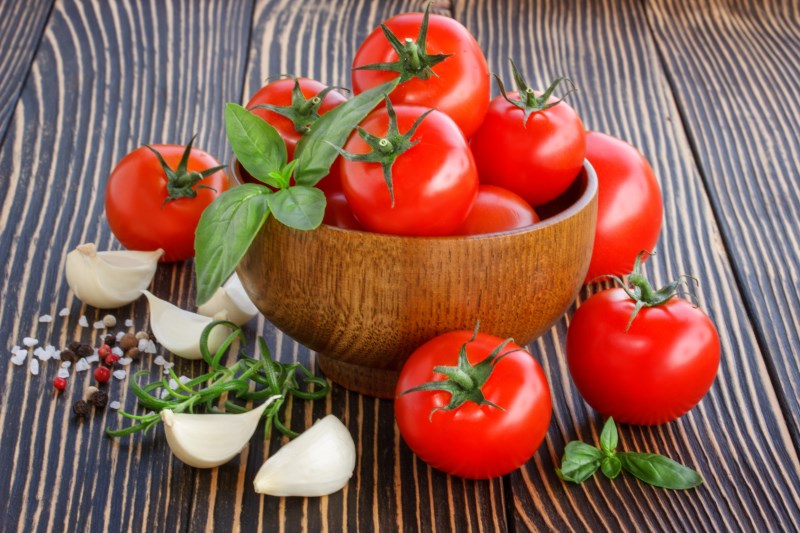
Tomatoes and Stroke
A stroke occurs when the blood supply to your brain is blocked or reduced enough to cause a severe shortage of oxygen to the brain.
Without oxygen and essential nutrients, brain cells begin to die.
This condition can be caused by a hemorrhage in a blood vessel or blocked arteries due to plaque.
It might also be caused by obesity, lack of exercise, excessive drinking, use of drugs, high cholesterol, or diabetes.
People who’ve suffered a stroke may die, but even those who live may be left with severe problems, such as paralysis, difficulty swallowing or talking, memory loss, and pain.
You can take several steps to ensure that you don’t suffer a stroke, and one of the most effective ways is by controlling what you eat.
This doesn’t just mean restricting unhealthy food but that you should also eat more of what’s good for you.
One study has shown that lycopene, which is found in tomatoes, can reduce risks of strokes by up to 55 percent.
The percentage is even higher for strokes due to blood clots, which are a lot more common, standing around 59 percent (57).

Tomatoes and Mood
Mood, or your emotional state, is important to monitor closely.
Anyone who is dejected or despondent is bound to perform poorly in life, whether in the workplace, with family, or in social settings.
A good mood is needed to keep you happy and motivated and can help you be successful.
By disrupting the connection between your brain’s emotional center and action center, mood disorders can cause irrational behavior and hamper your quality of life.
Aside from relieving unhealthy stress, sleeping well, and exercise, taking in certain nutrients can improve your mood.
Folate, by preventing a buildup of excessive homocysteine in the body, can be very effective in helping with depression.
Too much homocysteine interrupts the production of hormones, such as serotonin, dopamine, and norepinephrine, which are responsible for keeping you happy and regulating your appetite, sleep cycles, and emotions.
It is also effective in decreasing levels of perinatal depression (59).
Vitamin B6, which is also found in tomatoes, also helps produce these “feel-good” hormones and can prevent stress and mood disorders, such as anxiety or depression (60, 61).

Tomatoes and Pregnancy
Anyone who is or has been pregnant will understand the concerns that come along with it.
It is a time to be extremely careful since even little mistakes can cause problems.
An unhealthy pregnancy might lead to impairments and deformities in the child by impeding proper development.
Taking proper care of yourself and taking prenatal vitamins is important for pregnant women.
They also need to take steps to make sure their diet is proper for them and the child they are carrying.
Vitamin B6, which helps manage hormones, can assist with nausea during pregnancy.
It can regulate hormones to make sure you experience less nausea and as a result, lose fewer nutrients due to throwing up (62).
Tomatoes also have folate, which is highly important during pregnancy.
Without enough folate in the diet, the baby is susceptible to many defects.
Inadequate folate in the diet early in the pregnancy might lead to neural tube defects, which may then cause a miscarriage or spina bifida in the baby (63).
By regularly taking folate through tomatoes or increasing consumption during the first trimester of your pregnancy, you can significantly reduce the chances of such defects (64).
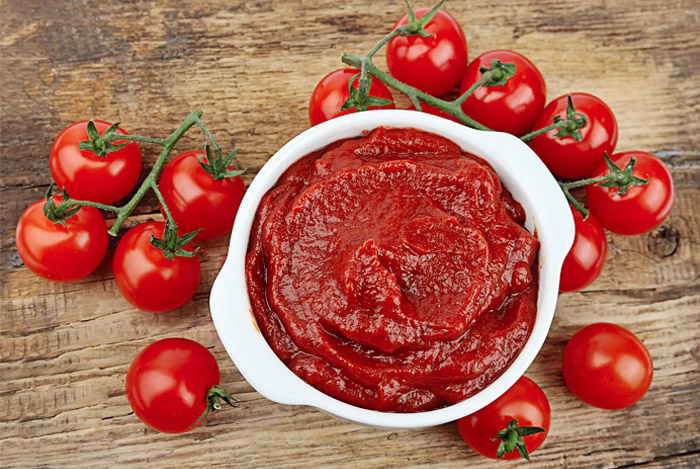
Tomatoes and Male Infertility
Infertility is often frustrating and heartbreaking.
For couples looking to conceive a child, it can be very stressful. Infertility can happen because of defects in either the male or the female’s reproductive system.
In men, it is usually due to deficiencies in semen.
Poor sperm quality can prevent successful conception despite active attempts to conceive.
Around 7 percent of the total male population is said to be lacking fecundity, with around half of all cases of infertility occurring in men.
Certain foods, including tomatoes, are very effective at tackling this issue.
In tomatoes, this is because of their folate content.
Studies have indicated that a high folate level in the diet can improve sperm health (65).
Men who don’t have enough folate in their diets can cause the chromosomal structure of their sperm cells to be formed incorrectly so that it can’t fulfill its function of fertilizing with a mature ovum (66).
Studies have shown that increasing the amount of folate in the diet can improve sperm quality and motility and correct the deficiencies, leading to a successful pregnancy (67).
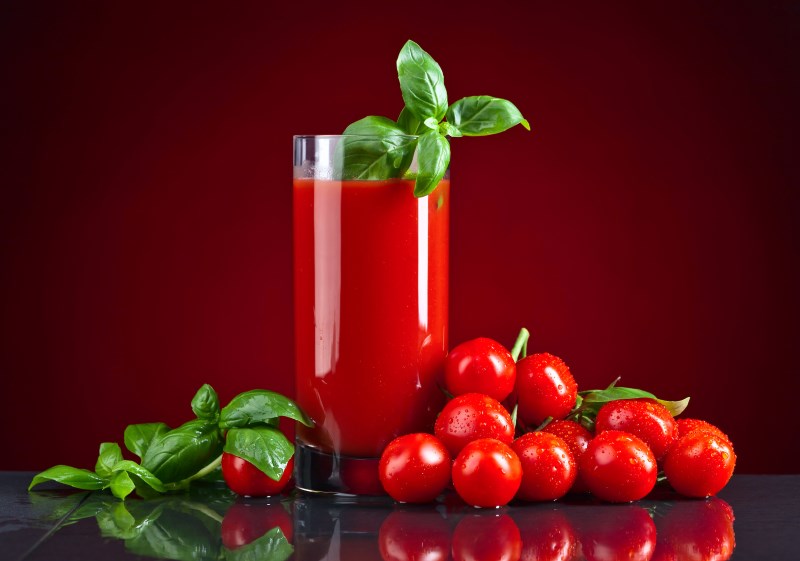
Tomatoes and Blood Clotting
Blood clotting is a very important function in the body since it helps prevent excessive bleeding.
Blood clotting, also known as coagulation, reduces the damage caused by damage in the blood vessels by forming a clot with blood plasma and proteins to cover up an injury.
Without proper clotting, you could possibly bleed to death even if you suffer minor wounds or cuts.
Similarly, internal bleeding, which you’re often not even aware of, could be life-threatening without proper coagulation.
Blood clotting also helps boost your immune system, since clots can trap invading microbes and decrease chances of becoming ill.
The entire process is quite complex, and the role of proteins is vital.
Tomatoes have vitamin K, which is necessary for four of these proteins to function.
Accordingly, tomatoes can help you recover faster from your bruises and wounds.
Newborn children often develop a vitamin K deficiency, resulting in hemorrhagic disease for newborns (HDN).
This is a condition where their bodies can’t clot blood properly, and this can lead to brain damage or even death (68).
By eating tomatoes while pregnant or breastfeeding, you can reduce the chances of your child suffering from HDN.

Tomatoes and Brain Function
Keeping your brain sharp and healthy is essential.
When you choose what to eat, it is a good idea to consider whether or not the nutrition provided by that food contributes to brain function.
You can then ensure to some degree that your brain will be performing at its optimal level and will be protected from the adverse effects of aging.
Tomatoes are a good option since they are packed with nutrients that help enhance brain activity.
One such nutrient is vitamin K, which is needed for the sphingolipid metabolism that takes place in brain cells.
Additionally, as an antioxidant, vitamin K can protect the cells in the brain from free radical damage, giving you some protection from brain cancer, Alzheimer’s disease, and Parkinson’s disease (69).
Manganese, too, contributes in a similar way: it is needed to form an enzyme called superoxide dismutase, which is a powerful antioxidant and thus keeps the brain healthy.
Manganese also helps make your brain sharper by helping neurotransmitters send electric impulses faster (70).
Vitamin B6 also helps by protecting your brain from cognitive impairment and memory disorders by regulating the level of homocysteine, too much of which can damage neural pathways (71).
Vitamin B6 might also prevent learning or mood disorders, since it helps in the production of hormones, such as serotonin and norepinephrine (72).
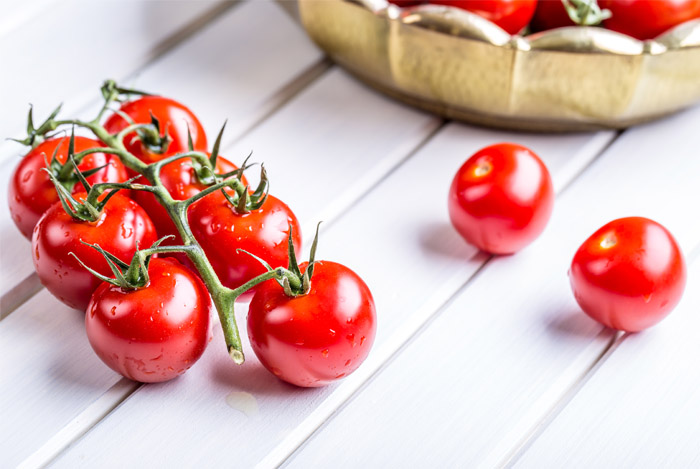
Tomatoes and Immunity
Without a strong immune system, you can become vulnerable to infections at the price of your health or even your life.
A weak immune system means having to be very careful about what you do, where you go, and what you eat.
This will snatch away your freedom to enjoy the experiences people normally get to enjoy.
Even if your immune system is functioning properly, you can eat certain foods to further boost it and protect yourself from the pesky little colds and viral diseases that most people catch every once in a while.
By doing so, you can see that your performance is not hampered and that you can enjoy activities as you normally would.
Vitamin A, which is found in tomatoes, can help a great deal by helping your body fight against illnesses, such as the common cold and the flu, to autoimmune diseases and cancer.
A deficiency in vitamin A increases the chances of suffering from such conditions as diarrhea or measles, especially for children.
Studies have shown that actively taking vitamin A can help prevent the need for medical treatments for such diseases (73).
Copper also helps enhance your immune system.
Through various enzymatic processes, it can contribute significantly to healing tissue.
It can also reduce risks for anemia and thus allow the immune system to work better (74).
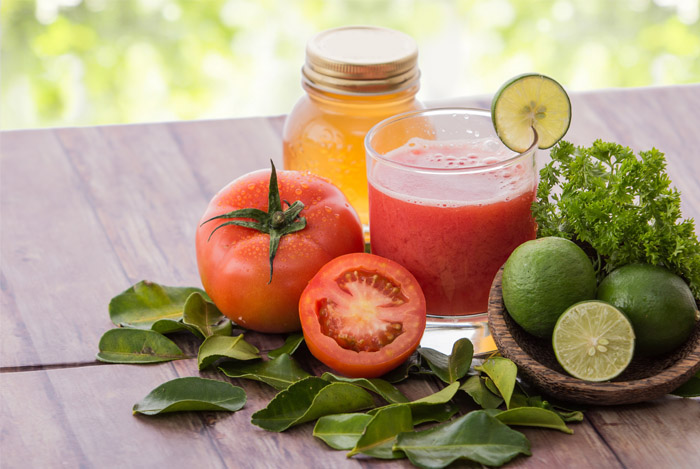
Tomatoes and Fetal Alcohol Syndrome
It is common knowledge that drinking alcohol during pregnancy can lead to severe problems for the child.
Many times, however, due to a lack of information or carelessness, pregnant women might consume alcohol and expose their child to such conditions as fetal alcohol syndrome.
By doing so, they might give birth to a child who has deficiencies that may be either physical or mental or both.
Some of these might include organ dysfunction, epilepsy, poor coordination or motor skills, learning difficulties, behavioral disorders, facial abnormalities, problems in socializing, problems with creativity or imagination, and abnormal weight.
Even if the child isn’t born with fetal alcohol syndrome, he or she may have fetal alcohol effects, which are less severe but damaging nonetheless.
By no means should a pregnant woman drink alcohol during her pregnancy, but if you learned of your pregnancy quite late or fear that the damage may already have been done, then vitamin A, folate, and choline could prove helpful.
Through supplementation or by eating foods such as tomatoes, you can reduce the likelihood of your child suffering from such symptoms.
Studies have shown that these three nutrients, which are present in tomatoes, can possibly prevent fetal alcohol syndrome if pregnant women take them in sufficient amounts (75, 76).
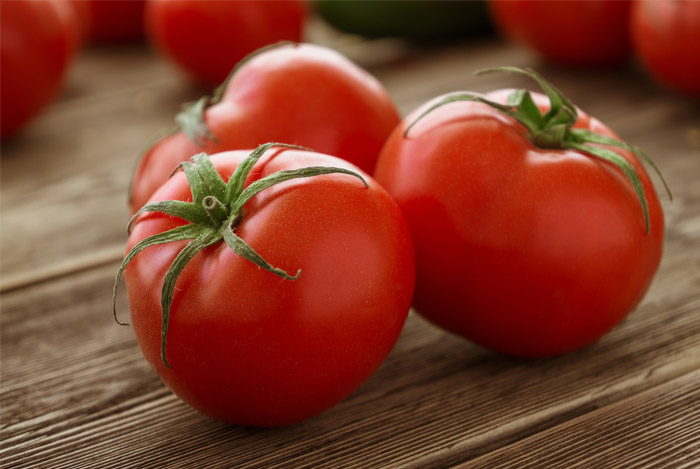
Tomatoes and Scurvy
Scurvy is the result of a diet lacking sufficient amounts of vitamin C.
While it isn’t too common these days, having an unhealthy diet without adequate fruits and vegetables can cause scurvy.
Some symptoms are bleeding and swelling of gums, fatigue, appearance of inflamed red or blue dots on the surface of the skin, pain in the joints and muscles, pain in the arms and legs, and shortness of breath.
If this deficiency of vitamin C continues, then you’re also likely to get jaundice, edema, or develop a heart condition.
In children, scurvy can cause abnormally low weight, irritability, diarrhea, and fever.
Loss of appetite and poor digestion may mean they aren’t getting the other nutrients they need, which can present a big challenge to proper mental and physical development.
Your body cannot produce vitamin C, but you can get your daily dose from many fruits and vegetables, including tomatoes.
Eating tomatoes can ensure that you don’t end up getting scurvy and all the symptoms that come with it (77).
This is why young children may also benefit from eating tomatoes.

Tomatoes and Tissue Damage
Our tissues are susceptible to damage, but our body responds to the wear and tear by repairing these tissues and making sure they can function well again.
Our tissues may be damaged in many ways, ranging from cuts to more severe internal damage.
If nothing is done about it, pretty soon our organs would stop performing properly, and we wouldn’t be able to keep on living.
Through the processes of replacing and regenerating worn-out and damaged tissue parts, however, our tissues can remain whole and healthy (78).
We should take in adequate amounts of vitamin C and beta-carotene to help our body function properly.
If you happen to be more vulnerable to wounds because of age, habits such as smoking or use of steroids, conditions such as diabetes, or exposure to radiation or chemotherapy, you should try to eat more tomatoes to ensure you’re getting enough vitamin C and vitamin A to help with tissue repair.
Beta-carotene can help you in having healthy scar tissues while vitamin C can help form new tissue and replace worn-out tissue.
To some degree, the B vitamins present in tomatoes help with this too.
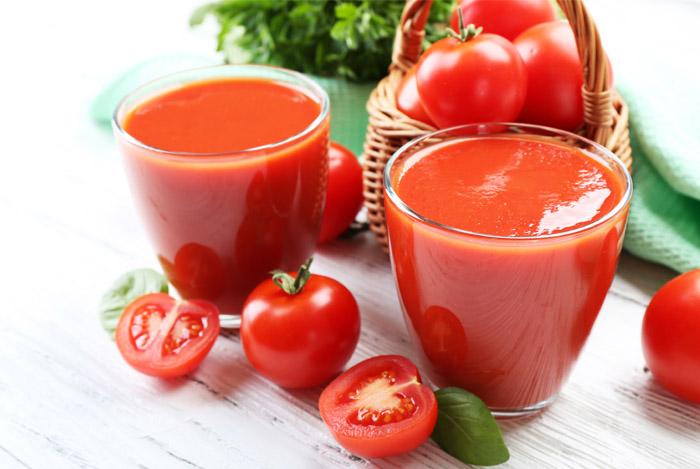
Tomatoes and Collagen
Collagen is a fibrous protein and the most dominant protein in your whole body.
It is present in your skin, joints, and bones and is essential for holding together connective tissues.
It provides firmness and strength, which is why you tend to have smooth skin and strong bones when you’re young.
As you age, however, collagen production decreases, and connections break down, causing you to form wrinkles and develop weak joints.
But by adding to your diet those nutrients that support collagen production, you can look young for longer and also perform like a young person into old age.
Collagen, which is needed in your teeth, blood vessels, eyes, heart, tendons, ligaments, and essentially all parts of your body, is vital for your overall health.
Vitamin C has a critical role in collagen synthesis, which is why eating tomatoes will not only give you supple, elastic skin and protection from damage due to UV radiation, but will also protect your other organs from breaking down.
As mentioned above, collagen also helps close off wounds so that they can heal properly and prevent bacteria and microbes from invading through an opening in your skin (79, 80).
Tomatoes and Nutrients
Different nutrients have different benefits.
The whole point of having a healthy diet is that your body receives these nutrients and becomes healthier through them.
Your efforts will be futile, though, if those nutrients are not properly absorbed and used by the body.
Without absorption, those nutrients will merely be expelled without being broken down and distributed to different cells across your body.
Several nutrients in tomatoes actually help in the absorption of other nutrients that you get from other foods.
For instance, vitamin C helps in the absorption of iron, particularly nonheme iron.
Iron deficiency, which is widespread across the world, can be combated in many cases just by increasing the amount of vitamin C you’re ingesting.
Iron helps metabolize proteins and produce hemoglobin and red blood cells, so it is a good idea to eat more tomatoes alongside food sources of iron (81, 82).
Copper also helps absorb iron from the digestive tract and regulates its release from the liver (83).
Finally, manganese helps in mineral absorption, allowing better use of nutrients, such as vitamin E and magnesium.
Being a cofactor in various enzymatic processes, it is involved in the absorption and utilization of several vitamins and minerals (84).
Therefore, not only are tomatoes a rich source of nutrition, but they also help you get better nutrition from other foods.
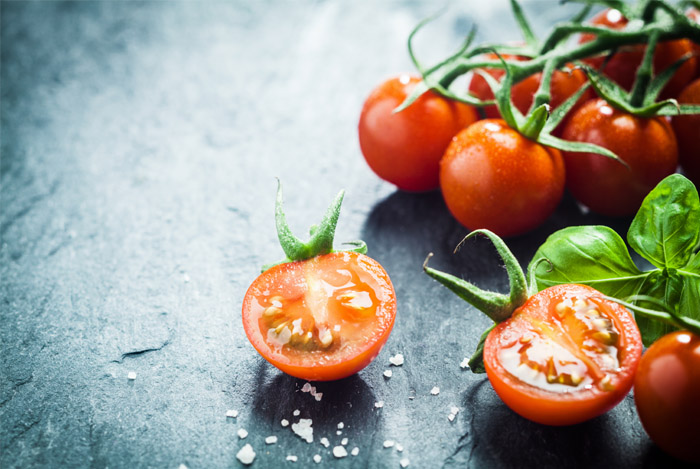
Tomatoes and Blood Pressure
Blood pressure is something that is a common concern across the world today, especially among aging populations.
High blood pressure can put a strain on your arteries and your heart, and your arteries will have to become stronger to deal with the pressure.
When the walls of the arteries thicken, the actual passage will narrow, so it is easier for the passage to become clogged and prevent normal blood flow.
Depending on where the block occurs and where the destination of the blood traveling in that passage is, you could suffer a heart attack, a stroke, severe memory loss, kidney disease, or organ failure.
If the walls of the arteries don’t thicken but instead collapse under the pressure, internal bleeding will occur, and the same thing will happen.
Vitamin C and vitamin B6 found in tomatoes can have a positive effect on blood pressure, ensuring that it doesn’t get too high.
They can increase blood flow in your arteries and therefore reduce the pressure (85, 86).
Young Eyes and Hair
Melanin, the natural dark pigment in our bodies, is found in our skin and hair.
These pigments give our eyes, hair, and skin their color and vibrancy.
As we age, however, the pigment cells in the follicles of our hair and eyes gradually start dying.
With less melanin present, the color from our hair and eyes begins to fade, and we get gray hairs and dull eyes.
One way melanin helps you look young is by giving off that color, but it also helps by protecting your skin from photodamage or skin damage induced by the ultraviolet rays of the sun.
Exposure to sunlight darkens your existing melanin and causes new ones to form, thus darkening your skin with a “tan” and reducing the penetration of the UV rays into your skin.
So melanin also helps you prevent signs of photoaging, such as wrinkles and dark spots as well as conditions such as skin cancer (87).
Tomatoes are great for melanin production because they contain a healthy amount of copper, which is essential to the process of melanin synthesis.
By eating tomatoes regularly, you can ensure that you are helping your body look younger and also helping it protect itself from damage due to external sources, such as the sun.
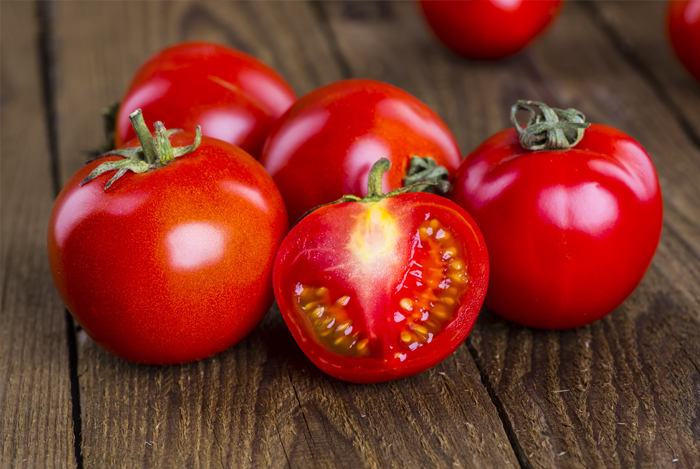
Tomatoes and Energy
Today, when most people are over-stressed because of work or studies or something else, it is easy to feel tired and the lack of energy.
With various activities and pressures draining you, you may constantly feel fatigued.
After a point, the fatigue may lead to you not being able to enjoy the different activities you partake in anymore and may also affect your mood and emotions.
You may feel irritable or may not be able to perform at your optimal level, which can have adverse consequences for your professional, social, and personal life.
For healthy energy levels, some factors you have to consider are your diet, level of exercise, how much sleep you’re getting, and how much stress you’re exposed to.
Regarding diet, eating more copper-rich foods, such as tomatoes, can be a great step forward because copper helps synthesize molecules called adenosine triphosphate (ATP), which is significant because ATP transports chemical energy within cells.
Having adequate amounts of copper in the body will mean that all our cells have access to energy whenever they need it (88).
This will reduce fatigue and make sure you are alert and active every day.

Tomatoes and Metabolism
Enzymes are biological catalysts that are used across the body for various purposes.
The main purpose of enzymes is to speed up chemical reactions so that they occur in time for everything to function properly.
Without enzymes, the reactions would take place too slowly for the body to survive, let alone the question of adequate performance.
Enzymes may assist in the breakdown of molecules into smaller units or in the buildup of molecules.
Tomatoes can help with cellular metabolism because of the copper they contain.
Copper is a cofactor in numerous enzymes (more than fifty of them!) and is vital for their proper function in our body.
Copper is an essential component of these enzymes, without which our metabolism would slow down, and we would cease to function as normal human beings (89).
This would be a result of the disruption of our nervous and metabolic pathways and would affect the brain in particular.
By including more tomatoes in your diet, though, you can see that your body is getting enough copper and that these catalysts are properly formed.
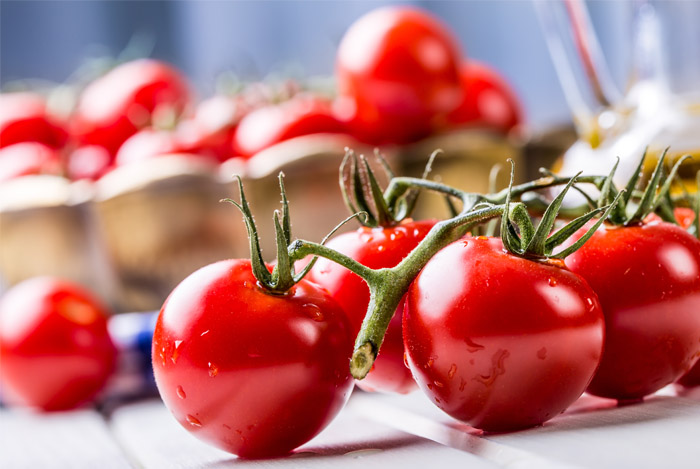
Tomatoes and Thyroid Glands
Your body is an intricate network of different organs with their own functions, most of which are vital for your health and survival.
The thyroid gland is one such organ.
Located in your neck, this butterfly-shaped gland regulates your body’s metabolism through the two main hormones it releases.
Excessive secretion of these hormones, known as hyperthyroidism, can cause anxiety, moodiness, hyperactivity, sweating and shaking, hair loss, or missed periods, among other symptoms.
On the other hand, the symptoms of inadequate secretion, known as hypothyroidism, include insomnia, fatigue, dryness of skin and hair, depression, pain in the joint and muscles, and heavy blood flow during menstruation.
Maintaining thyroid health is clearly very important.
Manganese, which can be found in tomatoes, is particularly beneficial for you because it is needed for the production of thyroxine, which is one of the most important hormones in your body (90).
A healthy level of copper in the body can also promote thyroid health (91).
Thus, with tomatoes, you can properly maintain a healthy weight and appetite and make sure your organs and metabolic pathways are operating smoothly.
Tomatoes and PMS
For most women, the one thing they look forward to the least is menstruating each month.
Oftentimes, it isn’t the period of bleeding itself that is so detestable but the hormonal fluctuations that cause problems before it begins.
These fluctuations, starting up to a week before menstruation, have symptoms that are both psychological and physiological, with neither being pleasant.
Symptoms include breast tenderness, weight gain, acne breakouts, emotional outbursts, backaches, cramps, bloating, food cravings and inclinations to binge eat, and mood swings.
For those women who experience these each time, eating more tomatoes can contribute to alleviating some of the symptoms.
Tomatoes have manganese, which has been shown to help relieve some symptoms, such as headaches, depression, irritability, and mood swings.
Calcium and magnesium, which also have a similar effect, are also present in tomatoes (92).
Likewise, vitamin B6 has been shown to help reduce breast tenderness, cramps, nausea, tiredness, headaches, and acne breakouts (93).
By eating tomatoes, you can take in these nutrients, which can allow you to live life normally without hormonal changes affecting your performance in regular activities.
You can actively take your life into your own hands by not letting your menstrual cycle control how you go about it.
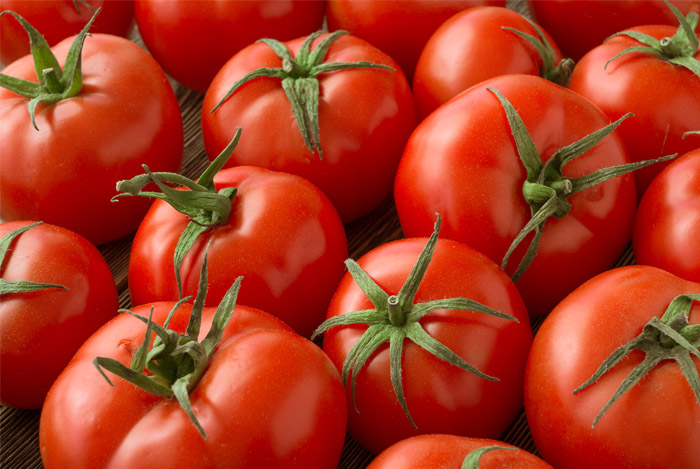
Tomatoes and Muscles
Muscles are about so much more than just aesthetics.
They are important for helping you maintain your overall health.
They improve insulin sensitivity by storing glucose in another way, helping you avoid insulin resistance and diabetes (94).
They also help make dietary protein available to all your organs (95), but particularly important is in helping your body move and perform different activities.
They let you go about your regular activities and also ensure that your joints are in good shape.
It is important for you to see that you’re taking care of your muscles too.
You can do that to some extent by eating more tomatoes, particularly because of their potassium content.
Potassium assists your muscles in contracting and relaxing (96).
It also helps your heart, which is also a muscle, squeeze blood into the bloodstream every time (97), thus stabilizing the rhythms of your heart.
Too little potassium, or hypokalemia, can cause muscle cramps during activities, which can be painful and inconvenient (98).
Another benefit is that it promotes the growth of muscle cells and ensures that energy is used effectively by those cells (99).
Your muscles are kept strong and fit that way and are able to perform tasks at an optimal level.
Tomatoes and Electrolytic Function
Electrolytes are those substances that, when dissolved in water, produce solutions that conduct electrically.
They carry a charge and are integral for human health and survival.
Aside from potassium, other electrolytes present in tomatoes (albeit in lower amounts) are magnesium and calcium.
Together, these minerals can ensure that the body functions normally.
One important function is maintaining the balance of fluids within the body (100).
Given that tomatoes are 95 percent water and can assist with water balance through its minerals, too, it is a great way to avoid dehydration, particularly after intensive physical activity.
These electrolytes also improve the efficiency of your neurons so that your entire nervous system functions better and your reflexes are sharp.
An imbalance in electrolyte levels can also hamper muscular function, making them weak or causing erratic contractions.
Other symptoms are fatigue or lethargy, irregular heartbeats, convulsions or twitching or spasms, seizures, numbness, and nervous system disorders.
If the level of potassium in the body drops over a period of time, high blood sugar levels can develop.
If the drops are too much, you can even suffer from arrhythmia or paralysis besides all the other symptoms (101).
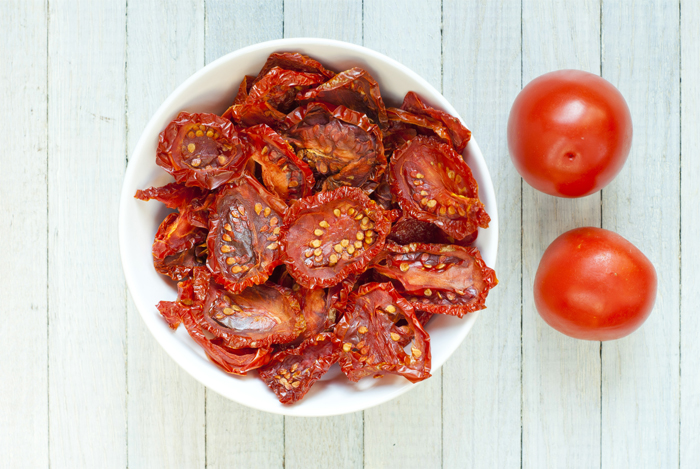
How to Buy and Store
It’s easy to go to the supermarket and get tomatoes, but you need a keen eye and good sense to make sure you buy fresh, healthy tomatoes and keep them that way.
You can find tomatoes year-round, but the best time to buy them is from June to October in most regions.
It might be a good idea to buy local instead of imported tomatoes because tomatoes naturally produce a ripening hormone called ethylene.
To increase shelf life and guard against easy bruising, the imported ones are usually plucked when green and then exposed to ethylene gas externally.
This doesn’t have any harmful effects, but you might be paying extra just to compromise on flavor.
Because the fruit was ripened rapidly after leaving the plant, the taste won’t be as rich, and the texture won’t be as nice.
Unless you’re specifically looking for tomatoes of a different color, make sure the ones you buy have a deep red color.
Weigh them and get ones that are firm to the touch (stay away from mushy ones) and feel heavier than they look.
Check the stem and leaves if still attached to make sure they aren’t brown or withered.
If the tomatoes don’t emit that tomato smell when you sniff them, or if the skin is wrinkled, leave them behind, and if your vendor has stored tomatoes in a large heap, choose the ones from the top because they haven’t been spoiled by the weight of the other ones.
What size or variety you buy should depend on your tastes and needs.
You can get canned tomatoes if you’re preparing a slow-cooked meal or want chopped tomatoes for later (102, 103).
For storing tomatoes, avoid using a refrigerator unless you live in a really hot climate.
Instead, store it somewhere else, such as a pantry, where it is cool but not so cold that the flavor of the tomatoes is destroyed.
If you don’t have such a spot and prefer refrigerating, remove them some time prior to using them to give them time to get a little of their flavor back.
Don’t heap them on top of one another, since they have soft skin and get bruised really easily.
Don’t store in plastic bags, and if you have unripe tomatoes that you want to use earlier, store them next to apples, which emit ethylene and will help speed the process (104).
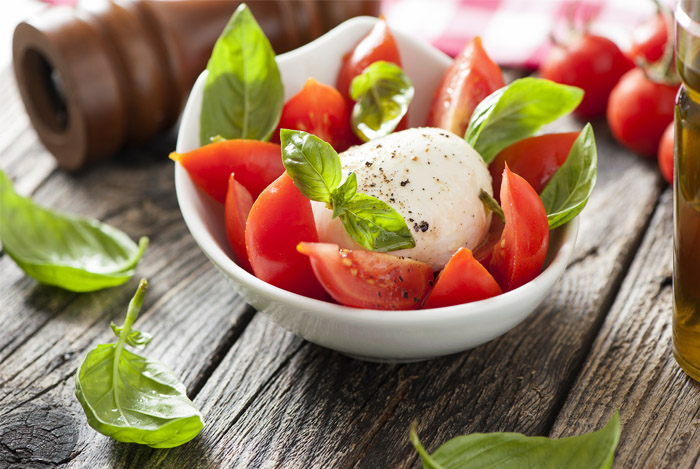
How to Include More Into Your Diet
Tomatoes have so many nutrients and so much flavor that you should try to include more of them in your diet.
It is quite easy to do because tomatoes can be added to so many different types of meals.
You can make dishes making tomatoes the hero, or you can simply add them in different ways to enhance the taste.
Some obvious uses for tomatoes are in salads and sandwiches, so start using them the next time you’re preparing one of them.
Tomatoes are also excellent for soups and sauces.
You can mix a little bit into your healthy smoothies or add them to toast or bruschetta.
You can eat them raw or put them into the juicer for a fresh, delicious juice.
You can stuff tomatoes with other ingredients (e.g., meat, rice, onion) or use tomatoes to stuff other foods (such as chicken rolls).
You can grill them, pickle them, candy them, and squash them.
Tomatoes are easy to dice up whenever you want a zingy salsa and are just as easily made into dips or used in vinaigrette.
Tomatoes are simple to work with and readily available, so you should have no problem eating more of them.
Whenever you’re preparing a home meal or dining out, try to experiment by making or ordering dishes that have tomatoes.
If you get tomatoes with your steak or with any other dish, eat them instead of neglecting them.
Of course, just because some dishes have tomatoes doesn’t mean you should eat too many of them (pizzas are still unhealthy, even with tomatoes) (105, 106, 107).
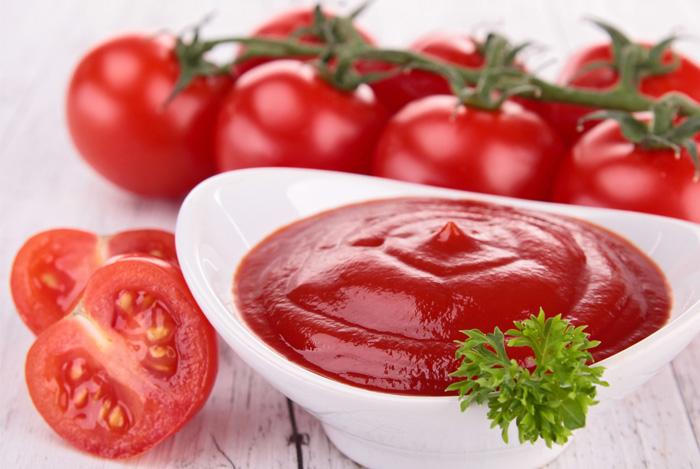
Precautions
Tomatoes really don’t have any side effects, but they may not be good for some people.
Although rare, allergic reactions to tomatoes do occur.
If you’re allergic to grass pollen, then it is likely your body won’t respond well to tomatoes.
This is called an oral allergy syndrome, which happens when your immune system resists the proteins in certain fruits and vegetables.
This may cause you to experience swelling of the tongue or mouth, tingling lips, itching inside the mouth, and a scratchy throat (108, 109).
To be safe, if you’ve reacted negatively to some other vegetables or have been diagnosed for oral allergy syndrome, you might want to be wary of eating tomatoes.
You may also experience the same thing if you’re allergic to latex.
Cross-reactivity to the proteins in tomatoes may cause allergic reactions (110, 111).
Another concern is that tomatoes grown in fluoride-concentrated soil may have excessive levels of fluoride in them (112).
Some studies have associated high fluoride levels with brain damage and low IQ, and fluoride toxicity is said to cause many health issues, including thyroid problems, bone disorders, and muscle disorders (113).
Before purchasing, be sure you’re buying tomatoes that are safe and grown responsibly.
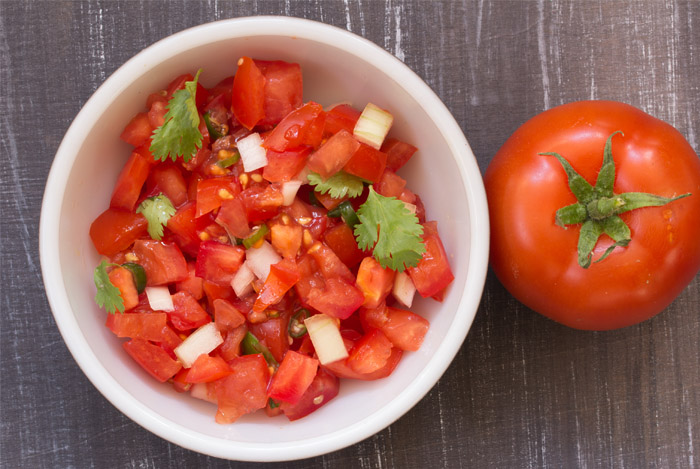
Conclusion
Tomatoes are one of the most well-known and widely used vegetables in the world.
They are available everywhere and can be used in all kinds of dishes.
It makes a lot of sense for you to actively try to eat more of tomatoes when they have so many advantages and are so easy to buy and grow.
You’ve seen how tomatoes can provide so much for your mind and body at so little cost, both health-wise and money-wise.
Put the knowledge you’ve acquired about tomatoes to good use, and start leading a healthier life by making them a more central part of your everyday routine!
FDA Compliance
The information on this website has not been evaluated by the Food & Drug Administration or any other medical body. We do not aim to diagnose, treat, cure or prevent any illness or disease. Information is shared for educational purposes only. You must consult your doctor before acting on any content on this website, especially if you are pregnant, nursing, taking medication, or have a medical condition.
HOW WOULD YOU RATE THIS ARTICLE?
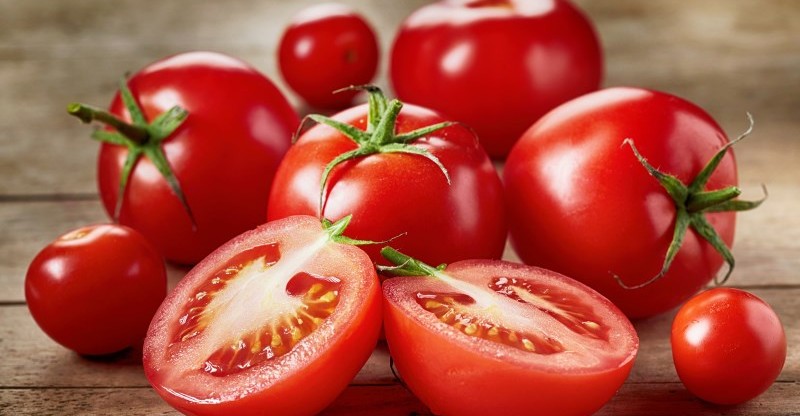


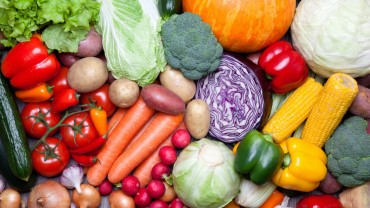



What age can I give my baby tomatoes from?
Are canned tomatoes still good for health?
Will collagen in tomatoes improve the way my skin looks?
How often should I eat tomatoes to have sun protection?
Is it possible to grow tomatoes at home?
Are tomatoes from the supermarket the same way beneficial as the organic ones?
If a kid had an allergic reaction when first trying tomatoes, does it mean he’ll be allergic to tomatoes for all his life?